2012
Dad's Last Tape: BBC Radio 4, July
An exploration of the different circumstances in which people's life stories are recorded, and the emotions that surface when they are relived. As well as listening back to interviews she did with her father 20-odd years ago, Clare talked to broadcaster Rony Robinson and singer/songwriter Sally Goldsmith about recordings they did with their mothers.
The wife of a man suffering from dementia talked about her bitter-sweet feelings when listening to tapes of his voice. Another woman, terminally ill with cancer, has made a series of recordings for her unborn grandchild as part of a hospice oral history project.
And Mary Stewart from the British Library talked about her research into the way recorded interviews are used by and for those most intimately involved. Along the way, we discover the power of the beloved voice.
Dad's Last Tape was chosen by the Radio Times as one of their five highlights of the week.
"This week's most poignant programme," Liz Barclay, Pick of the Week, Radio 4.
Producer: Clare Jenkins
Between the Ears: The Houses That Fall into the Sea: BBC Radio 3, June
A reflection on east coast erosion through the stories of four people living in north and east Yorkshire.
Lyz Turner's house, in the Holderness area beyond Hull, is falling into the sea. "My house has started talking to me," she says. "It produces haunting sounds like far-off women wailing."
One winter, Ron and Judith Backhouse watched as first their fence, then their shed, and finally three trees slipped over the cliff at the bottom of their garden on a private estate above Scarborough. "The crack is running up towards our next door neighbour's house," says Ron. "It's maybe five or ten metres away from his bungalow now and we're connected to him. So if he goes, we go, too."
Artist Kane Cunningham bought a condemned bungalow on the same estate so that he could live in it, use it as an artistic installation and document its demise. Since he moved in, the neighbouring three houses have been demolished for safety reasons, and he reckons his is next. "You can't fight Nature," he says, "so you may as well celebrate its destructive force. Houses aren't immortal, and neither are we, despite what we may want to believe."
This programme, combining interviews with music and the sounds of the sea, the wind, the land, the dying houses, explores how people cope with natural calamity: with anger, stoicism, distress, and art. "As I listen to the soft wailing through the wall," says Lyz, whose family have lived here for three generations, "I feel the house knows what's coming. Since Domesday there's been a dwelling where I live, and it seems all the voices of the past, whoever lived here, all the people from the lost villages under the sea, are crying for us now."
"...sad but strangely uplifting sound/seascape" (Radio Times)
Other feedback:
"hauntingly beautiful"... "a poem in itself"... "skilfuly blended together - and I loved the sounds underneath"... "very moving - though maybe I shouldn't have listened to the ending at work"
Producer: Clare Jenkins
Dave Brown's New Highway Code: BBC Radio 4, May
Comedian Dave Brown - member of the Mighty Boosh comedy troup and a graphic designer - looks at the history and development of the Highway Code as it becomes an app and e-book. It was first published as a guide 'to all courteous people' in 1931 and became part of the Driving Test three years later. As a boy, Dave would draw the road signs on his school book - it might even be the reason he became a graphic artist.
On a road trip from London to Brighton in his vintage Morris Minor called Betty, he meets passengers and drivers to discuss the development of the Highway Code and modern driving manners. He takes cyclist and writer Zoe Williams on a spin to Oxshott, meets fellow graphic artist Nathan Lauder, and arrives in Brighton to chat to racing driver Ben Constandurous about the rules of the race track. Dave concludes by developing a new highway code of his own for modern drivers.
Producer: Janet Graves
The Lost Art of Churches, BBC Radio 4, May
Large amounts of important, modernist visual art commissioned by the Church in the twentieth century are in danger of being forgotten. No central record exists of these artworks - paintings, sculptures, stained glass, murals, tapestries and icons - many of which have even been shut away, victims of a change in fashion or worries about their vulnerability.
Paul Bayley of the ACE Trust (Art and Christian Enquiry, promoting contemporary art in UK churches) locates examples that illustrate the variety of art that can be found if you look for it.
In Hayes, Middlesex, at the Church of the Immaculate Heart of Mary, he finds Annigonni's late 1950s painting of the Madonna and Child featuring an atomic explosion rendered in gold leaf in the background. At St Johns, Waterloo, he examines two paintings by the German Jewish refugee from the Nazis, Hans Feibusch, who became probably the most prolific church artist in Britain in the last century. And in Soho, in the French-speaking Church of Notre Dame, Paul meets art restorers who have been rescuing unique murals painted by Jean Cocteau, which were damaged by graffiti and spilt soft drinks.
One of the discoveries that most excites Paul is a large crucifixion painted by Graham Sutherland in St Aidan's East Acton, in the early 1960s. But not all church art, he discovers, is situated in church buildings. The Methodist Art Collection was set up to be taken around the country and exhibited in different venues, and is still commissioning new work. Paul also travels to Northumberland, where, at the tiny church of St John, Healey, he sees award-winning new work in two windows created by James Hugonin and the Danish-born Anne Vibeke Mou.
Producer: Bob Dickinson
Famed For Its Knitting, BBC Radio 4, February
A centenary celebration of Woman's Weekly magazine. Clare worked on the magazine before becoming a radio broadcaster, and remembered those times in the company of her old colleagues Catherine Darby (now running the MA in Magazine Journalism at the University of Central Lancashire) and Wendy Forrester. Topics covered included the Mary Marryat problem page and the philosophical column, The Man Who Sees (which Clare briefly wrote for).
She also talked to the current editor Diane Kenwood, cookery editor Sue McMahon (unflappable mistress of everything from sushi to steak and kidney pud), fiction editor Gaynor Davies and knitting editors Tina Egleton and Kandy Regis, whose repertoire covers everything from christening shawls fine enough to go through a wedding ring to the record-breaking 3km of knitted bunting readers contributed for its centenary year.
And the appeal of this 100-year-old magazine? "It's got everything," said reader Violet Winter, 97½, who has been reading it for over 80 years. "I've knitted lots and lots of the patterns, I love looking at the cookery, and the readers' letters, seeing what everyone is doing. And the short stories. I feel as though I've grown with it or it's grown with me. Woman's Weekly is part of me."
Producer: Lindsay Leonard (in-house for BBC Radio 4)
"Clare Jenkins's engrossing reportage leaves you in no doubt: for readers and staff alike, Woman's Weekly is nothing less than life-affirming." (Chris Gardner, Radio Times)
Between the Ears: Cowdust Time, BBC Radio 3, January
An evocative sound portrait of Indian "cowdust time". The twilight hour when the cows come home from the fields, women cook, children play and birds return to their nests.
Dust rises from the hooves of cattle returning to a village at sunset. Smoke from open fires wreathes in ribbons across the fields. As the evening shadows begin to lengthen, people, animals and birds all return to their homes to rest.
This time of day is known in India as "godhuli bela", or "cowdust time". It is a sacred time - a time when Lord Krishna himself brought his cattle safely home. In paintings, he is often seen meeting his beloved Radha in the evening, as the peacocks call, the bright green parakeets chatter loudly in the neem trees, and the temple bells and muezzins call people of different faiths to prayer.
There are many devotional songs and poems devoted to this twilight hour. It is seen throughout India as an auspicious time for engagements, weddings, even business ventures. But it's also a time when mothers call their children home, to avoid evil spirits. And when those same children are told not to whistle, for fear of inviting evil in.
In this hypnotic sound tapestry - recorded in Gujarat, the Kumaon hills and Madhya Pradesh - we hear the sounds of cows and other animals being brought back to their village, the loud clamour of birds, the eerie noise of crickets.
"It is that fantastic time of day," says writer and academic Rajendrasingh Jadeja, "when the cowdust raised transforms the scene from stark, sharp light to a fantasy world."
That fantasy world has been captured in art, music and literature. Painter and art critic Amit Ambalal, poets Jayant Parmar and Mahek Tantarvi, and musician Sugna Shah, among others, talk about the religious and cultural significance of this time. We also hear the poetry, prayers, lullabies and ragas depicting this magical time - "when the earth does yoga”.
Producer: Clare Jenkins
Some feedback:
"Wonderful. There were tears in our eyes as we listened."
"What a lovely programme! We were both entranced by it."
"Seductive and richly other. It drew me in. Lovely. Beautifully put together."
"I'm writing to let you know that I thoroughly enjoyed the Between the Ears feature Cowdust Time. I'm a former BBC radio producer and always make a point of tuning in to Between The Ears because of the eclectic content. While I'm listening, I'm usually doing something else - tonight I was preparing tomorrow's dinner - but, I stopped chopping carrots and just listened. A really beautiful programme - congratulations!"
"Really lovely programme. We listened to it in the dark, sitting on an Indian rug, and it was like a meditation."
"I've just listened to it and found it both beautiful and enlightening, and a wonderful counterbalance to the way I was feeling today. I’ve made some notes from it towards what might become a poem – not difficult, of course, because the programme is pretty much a poem in itself."
"I thoroughly enjoyed your Go-dhuli programme. It flowed so seamlessly and lyrically, and it was lovely to hear all those Indian voices. It was so evocative that I felt I was in India again."
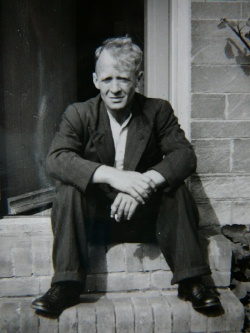
Jack Jenkins

Kane Cunningham at Knipe Point, near Scarborough
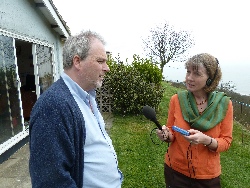
Clare with Kane, outside The House
The House project photographs copyright © Stephen McClarence

Dave Brown and 'Betty'
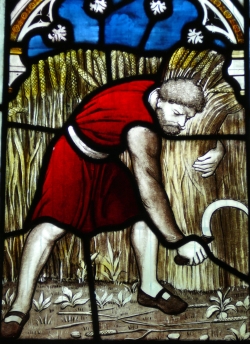
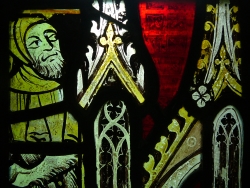
Church photos © Stephen McClarence
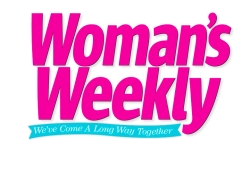

Cowdust Time

Clare with Dalit poet Jayant Parmar
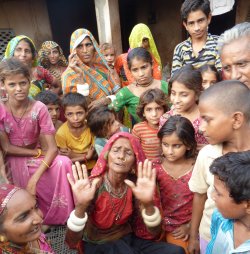
Singing a hymn to Lord Krishna in Gujarat
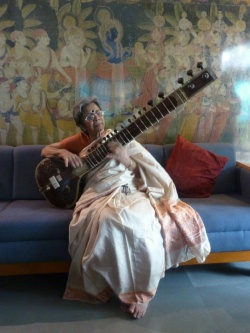
Singer and sitar player Sugna Shah
Cowdust Time photographs copyright © Stephen McClarence
